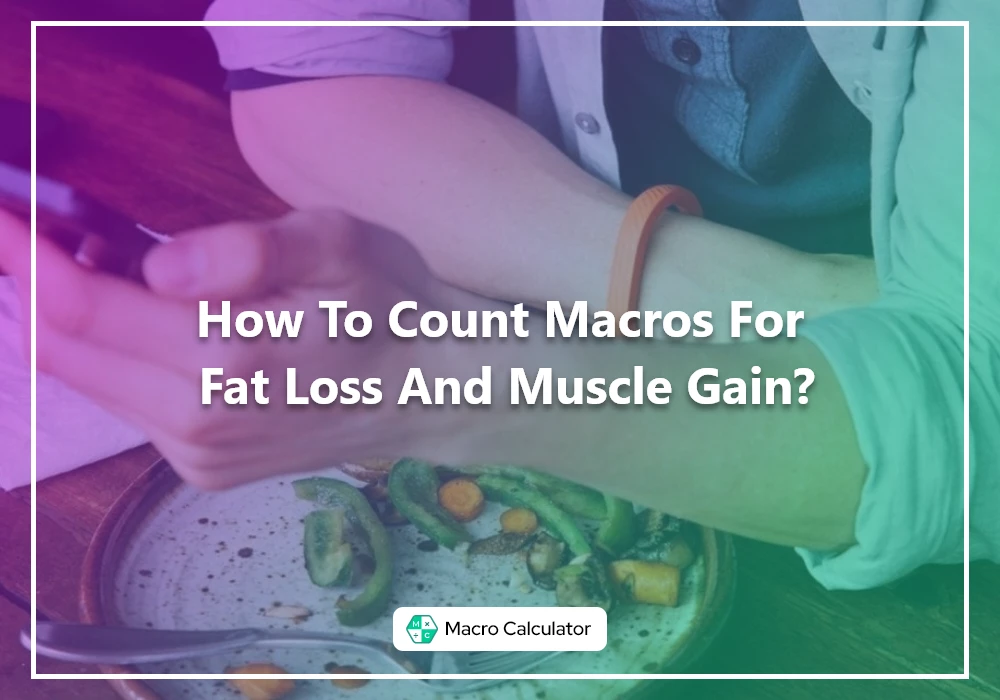 July 02, 2021
July 02, 2021
Counting Macros is essential when it comes to losing fat or gaining muscle. If you can count your daily macros intake, you can adjust it to make your specific health goals.
Fat loss and muscle gain should not have to be trouble. Most people dread the idea of going through intense workout sessions and giving up on their favorite foods.
Counting Macros is a much smarter way of achieving your health goals. And since it is all about managing your diet, you can create a macro intake plan that works the best for you.
If you are new to this term and you don’t know how to count macros, then you are at the right place.
In this article, we are going to share with you all you need to know about macros, how to count them, and the benefits that you get to enjoy by counting macronutrients.
The term “macros” is short for macronutrients. These include proteins, carbs, and fat. Most of the foods out there include macros as their basic ingredients. Macros contain different calories and if you want to follow a macro-based diet, you need to know how to count them.
Proteins contain 4 calories per gram. You need protein for proper immune function, the building of tissues, hormones, enzymes and so much more. Health specialists recommend that your diet should include about 10 to 35% protein. The requirements can vary based on each case.
Carbohydrates also contain 4 calories per gram. Carbs are a part of sugars, fibers, and starches. Health specialists recommend that your daily calorie intake should contain about 45 to 65% of carbs.
Fats contain about 9 calories per gram. Fat is required for various bodily functions such as hormone production. On average, a healthy diet plan includes about 20 to 35% of fat. Fat is commonly found in Oils, Butter, Fish, meat, and avocado, etc.
It is quite easy to learn how to count macros. The process is a bit technical but once you know how it works, you’d be able to do it in a simple and easy way.
You can use the process described below to get started
You need to know your exact calories requirements first before you do anything else. For that, you need to know your REE (Resting Energy Expenditure) and NREE (Non-Resting Energy Expenditure). These terms refer to the number of calories you burn during the rest of the activity stage.
Once you know these numbers, you can calculate the TDEE (Total Daily Energy Expenditure) in terms of calories burned.
There are many online calorie calculators that you can use for this purpose. After that, you can adjust the calories as per the amount you burn to reach your weight loss or muscle gain goals.
We have talked about the recommended macros intake while discussing the macronutrients. Your specific macros requirements might be different.
You can fine-tune the ratios to meet your health goals.
For example, if you want to lose weight, you need to cut down your fat intake and adjust the proteins and carbs according to that.
There are various online tools out there that offer you the feature of calculating macros in a simple and easy way.
If you want to know your exact macros requirement, you can use the Macro Calculator for that.
This tool helps you create just the right diet plan contenting the exact amount of carbs, proteins, and fat that you need to reach your health goals.
You can also track the intake of macros if you want to make sure that you stay on track. You can either track the macros manually by writing them in a journal. Or you can track them via an online app.
While keeping track of the macros, don’t worry if you find the numbers going a little bit up or down the established amount. It doesn’t matter unless you are reaching close to your goals.
You need to try the diet for at least a couple of weeks. After that, you need to check out your weight again.
If you are reaching your goals, then keep going the same way. If you are not reaching your weight goals, then you are going to need to make some adjustments.
This goes without saying that you need to shift towards a healthy diet. In fact, this is one of the primary reasons for choosing to go with a macro-based diet. You can get the macros from sources that are not so healthy. But still, you should go with a diet that doesn’t create more complications for you.
Counting macros helps with weight loss. You can set up the desired weight goal for yourself and come up with a macro intake routine that helps you meet that goal.
Counting macros and adjusting your diet according to that allows you to shift to a healthy diet. It inspires you to choose what is right for your body. You get to choose a healthier diet that meets the exact macros needs of your body.
Whether you want to gain muscle or lose fat, or you just want to have more energy, counting macros enables you to do all that. You just need to set up your health goals and you can count just the right number of macros that you need to achieve those goals.
Counting macros is quite simple once you start getting the hang of it. But the manual process for counting macros is quite complicated and hard to learn.
We recommend using online macros calculators for getting an accurate estimation of the number of macros that you need to reach your specific weight goals.
So, make sure to count your macros to create a perfect fat loss or weight gain diet routine for yourself.